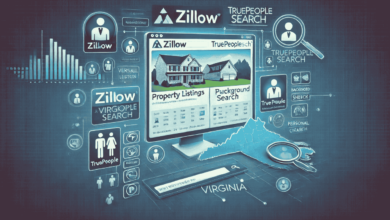Protecting Technology: How Climate Control Prevents Equipment Damage

In today’s fast-paced world, technology is at the heart of nearly every industry. But did you know that environmental factors, such as temperature and humidity, can wreak havoc on your valuable equipment? This blog dives into how climate control can protect your tech investments and keep your operations running smoothly.
The Impact of Climate on Technology
Understanding the Risks
Technological equipment is sensitive to extreme conditions. High humidity can lead to condensation, causing corrosion and electrical shorts. Conversely, overly dry conditions can result in static electricity, which poses a risk to circuit boards and other delicate components.
Real-world Examples
Consider a data center. Without proper climate control, servers can overheat, leading to downtime and potential loss of data. Similarly, manufacturing plants relying on precision machinery can see a dip in productivity without adequate temperature regulation.
Why It Matters
For business professionals and tech enthusiasts alike, understanding the importance of climate control is crucial. Not only does it prolong the lifespan of equipment, but it also ensures that operations are not interrupted, saving both time and money.
Key Components of Climate Control
Temperature Regulation
Maintaining an optimal temperature is essential to prevent overheating or freezing of equipment. Most tech environments thrive at around 70°F (21°C).
Humidity Control
Balancing humidity levels is equally important. Ideal humidity is generally between 40% to 60%. This range prevents both condensation and static.
Air Quality
Good air quality reduces the presence of dust and other particles that can block ventilation systems and internal cooling mechanisms.
Types of Climate Control Systems
Traditional HVAC Systems
These systems are common in commercial settings. They offer basic temperature and humidity control suitable for many tech environments.
Precision Cooling Systems
Designed specifically for environments housing sensitive equipment, these systems offer more precise control over temperature and humidity.
Portable Air Conditioners
Ideal for smaller setups or temporary solutions, portable units can provide targeted cooling where and when it’s needed most.
Benefits of Implementing Climate Control
Increased Equipment Lifespan
Proper climate control reduces wear and tear on components, extending the life of your technology.
Enhanced Performance
When equipment operates within its ideal temperature and humidity range, it performs more efficiently, leading to better productivity.
Cost Savings
By avoiding equipment failure and downtime, businesses can save significantly on repair and replacement costs.
Best Practices for Climate Control
Regular Maintenance
Ensure that your climate control systems are regularly serviced. This includes cleaning filters, checking for leaks, and calibrating thermostats.
Monitoring Systems
Implement monitoring systems that provide real-time data on temperature and humidity levels. This allows for quick adjustments when necessary.
Professional Assessment
Engage an hvac company in Midvale or your local area to assess and recommend the best climate control solutions tailored to your needs.
Choosing the Right System
Assess Your Needs
Determine the specific climate control requirements of your environment. This includes the size of the space, the amount of equipment, and the typical environmental conditions.
Budget Considerations
While precision systems may have higher upfront costs, their long-term benefits often outweigh these initial expenses.
Professional Advice
Consult with climate control experts to understand the best options available. Their insights can help you make informed decisions that align with your operational goals.
Common Challenges and Solutions
Overcooling
Too much cooling can be just as detrimental as overheating. Ensure that systems are properly calibrated to avoid energy waste and equipment damage.
Uneven Temperature Distribution
Large spaces can have varying temperatures. Use fans and air distribution systems to maintain a consistent climate throughout.
Humidity Fluctuations
Sudden changes in humidity can be harmful. Invest in humidifiers or dehumidifiers as needed to maintain stable levels.
Future Trends in Climate Control
Smart Systems
AI and IoT are revolutionizing climate control. These smart systems can predict and adjust conditions in real-time, optimizing efficiency and reducing manual intervention.
Eco-friendly Solutions
Sustainable climate control options, such as geothermal cooling and solar-powered HVAC systems, are becoming more prevalent, offering both environmental and economic benefits.
Integration with Building Management Systems
Integrating climate control with overall building management systems allows for streamlined operations and better resource utilization.
DIY Tips for Climate Control
Simple Steps
For smaller setups, ensure ample airflow around equipment, use fans to keep air moving, and position equipment away from direct sunlight.
Regular Checks
Periodically check the temperature and humidity levels using affordable digital monitors. Adjust portable units as needed to maintain optimal conditions.
Seal and Insulate
Ensure that your tech environment is well-sealed and insulated to prevent external temperature fluctuations from affecting your equipment.
Conclusion
Climate control is not just about comfort—it’s an essential aspect of protecting your technology and ensuring operational efficiency. By understanding the impact of environmental factors and implementing appropriate systems, you can safeguard your investments and enhance performance.




